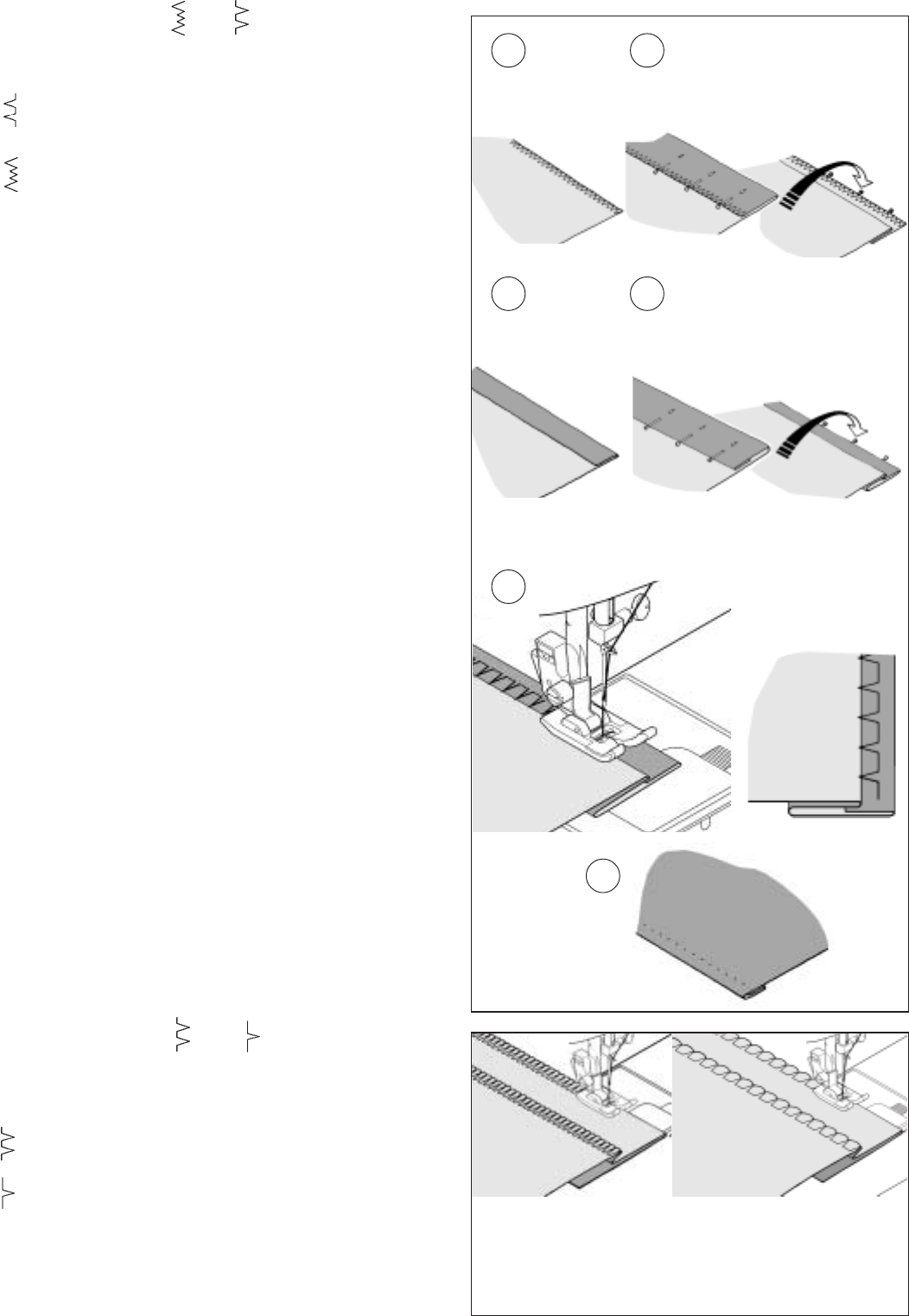
44
BLIND STITCH
1. First finish the raw edge. Do this by turning it under on fine
fabrics or overcasting it on medium to heavyweight fabrics.
Then turn the hem up the required depth, press and pin in
place.
2. Now fold the fabric as illustrated.
3. Place the fabric under the foot with the fold of the fabric
positioned so that the needle just pierces the fold when the
needle swings to the left. Use stitch width control to fine tune
exact position of needle.
4. When completed, the stitching is almost invisible on the right
side of the fabric.
SETTINGS :Presser foot - Zigzag foot
:Thread tension control - S - E
-
Regular blind stitch for normal fabrics
-
Elastic blind stitch for soft, stretchable fabrics
Reminder: Patterns for blind hemming must be mirror imaged.
1 2
1 2
4
05
(
Mirror image
)
04
SHELL STITCH
Turn under the raw edge and press. Place the fabric right side up
so that the zigzag part of the stitch sews just over the folded
edge, pulling the fabric in to form a shell hem. Trim away excess
fabric close to the stitching line.
SETTINGS :Presser foot - Zigzag foot
:Thread tension control - S - E
Regular shell stitch produces a tiny shell hem on
lingerie and other fine garments.
If bigger size of shell pattern is desired, use four-point
shell stitch.
-
-
05 28
3
Medium to heavyweight fabric
Material de peso medio a pesado
Tissus moyens et lourds
Under side
Reverso
Envers
Under side
Reverso
Envers
Under side
Reverso
Envers
Under side
Reverso
Envers
Fine fabric
Material fino
Tissus fins
Top side
Cara
Endroit
Regular shell stitch
Point de coquillage regulier
Puntada de concha normal
Four-point shell stitch
Point coquille à quatre
points
Puntada de concha de
cuatro puntos


















